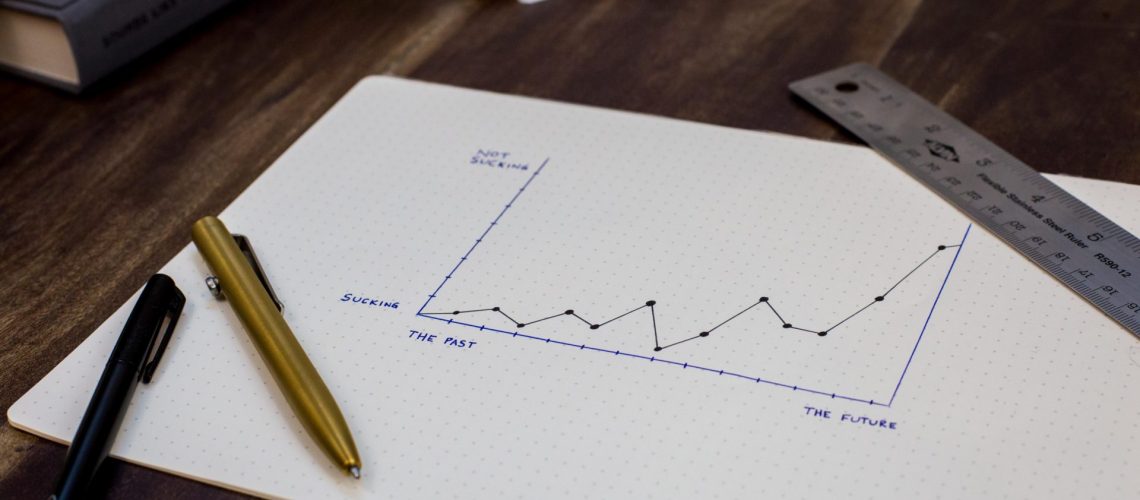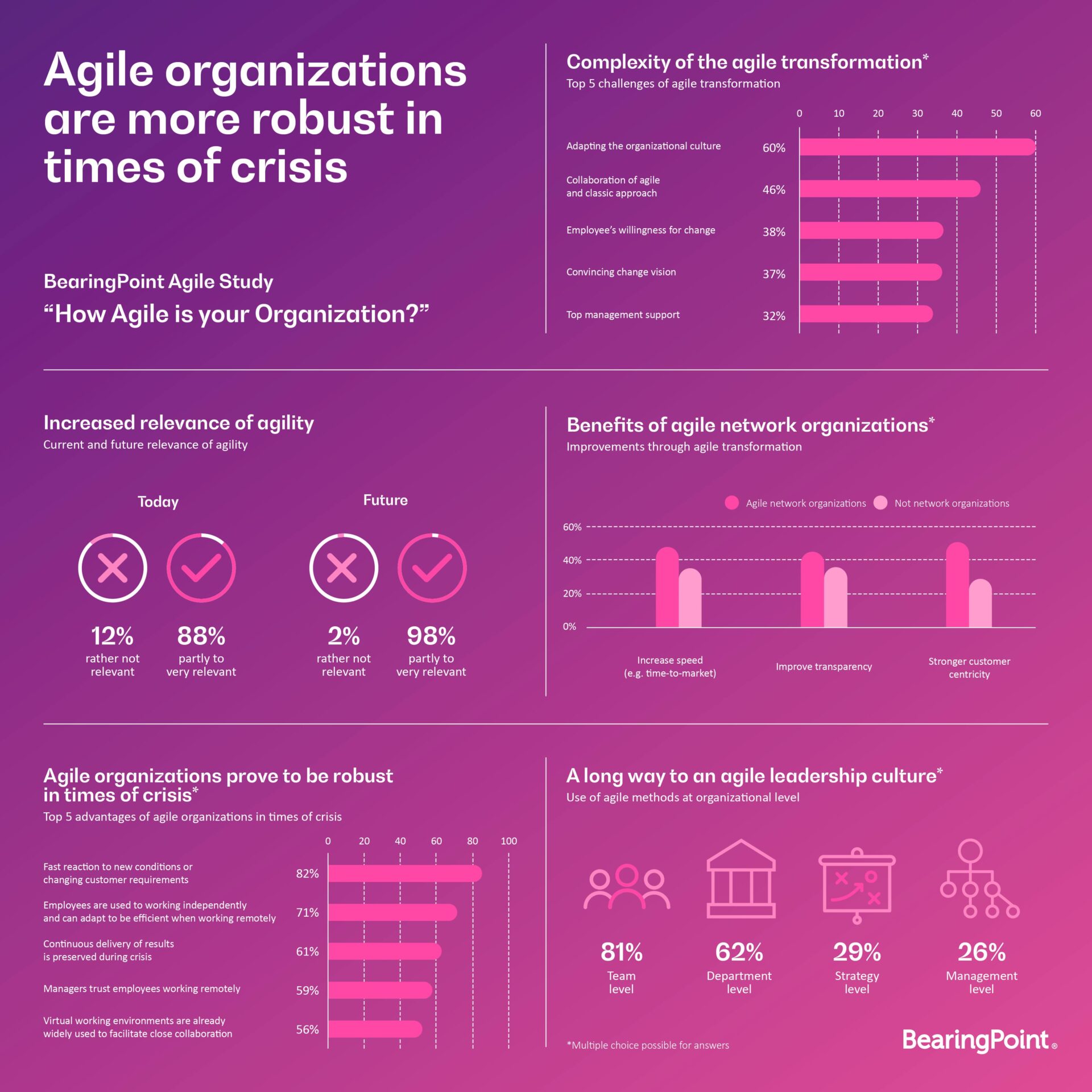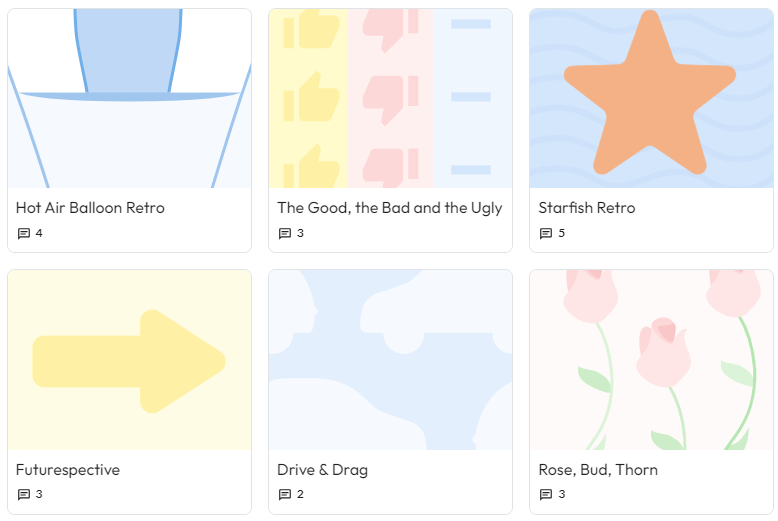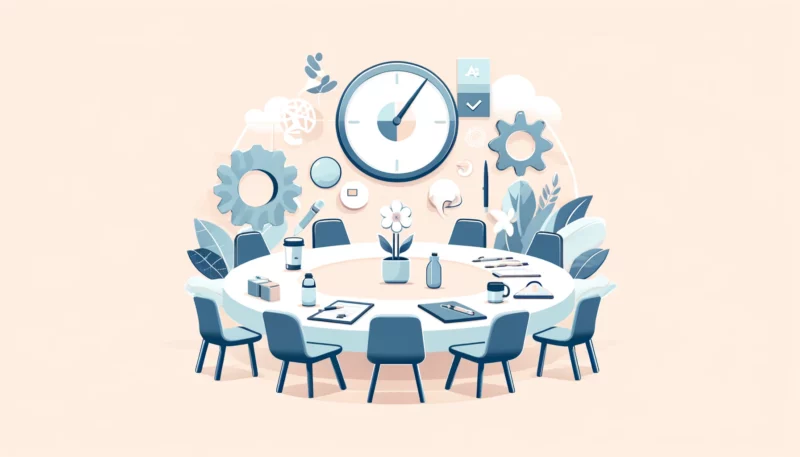Agile is like a coach for the Champions League. Once you've integrated agile at all levels of your organization, you're at the top of your game. You are closer to your customers, you spot mistakes sooner, you are flexible, and you have a self-organized team. The result: You deliver better results faster.
But how do you know how advanced your company's agile maturity is? Often, organizations have already taken training on agile and implemented agile in some departments. However, they don't know what their agile maturity level is. This presents them with a challenge: Where should they start to work further on agile, if they don't know how agile they are so far?
This is where an agile maturity measurement comes in. You can use it to determine your company's agile maturity level and thus evaluate agility. I'll show you which models you can use to measure agile maturity – and where you can start to increase agility.
What is the agile maturity level?
The agile maturity level tells you how agile the working methods are in your company. It reveals how adaptive and willing to learn employees and teams are in your organization. You have reached the maximum agile maturity level when all organizational levels have understood, accepted and implemented the agile way of working.
In order to measure the agile maturity level, the indicators
- agile values,
- agile events,
- customer focus,
- team autonomy, and
- planning
play a major role.
What challenges do companies face in agile transformation?
You are not alone. Many companies in Germany (and around the world) are currently looking for efficient ways to drive their agile transformation. A study recently determined what companies are struggling with most. It found that companies have particular problems when it comes to adapting their work culture, the interplay between agile and traditional projects, and cross-functional collaboration.
Study: Agile Pulse 2020 – the agility study from BearingPoint
How to measure the agile maturity level
In order to determine the agile maturity level, there are various agile maturity models available on the market. Before you decide on one of the models, let's take a look at what an agile maturity model must be able to do so that you can draw important conclusions.
What does an agile maturity model have to be able to do?
There is no scientific basis for determining what an agile maturity model must be able to do. However, to approach the question, we can take a look at the purpose of an agile maturity model.
Agile is supposed to help you achieve business goals. However, every business has different goals. This means: The respective aspects of agility are different in each organization. What this means in practice is that an agile maturity model should take such an universal approach that it can promote an organization's agile maturity level regardless of business goals and the progress of the agile transformation.
Most Agile Coaches and Scrum Masters run in circles...
...fixing superficial symptoms. Time to use psychology to foster sustainable mindset change.
That means that there is little point in asking how much more agile another company is or what percentage of an organization is agile. The only thing that matters is how satisfied customers, employees and stakeholders are. An agile maturity model should therefore only be a means of creating satisfaction and the desired business value.
By the way, we have developed a small (2 minutes) Agile Maturity Assessment that helps to question your own priorities in the context of agile transformation. It can be filled out by the whole team and even includes a benchmark – have fun:
Which models for agile maturity measurement are there?
To measure the agile maturity level, you have these 4 models to choose from:
1. Agile Maturity Measurement Module (Great Place to Work).
The internationally active research and consulting institute "Great Place to Work" has developed the so-called Module for Measuring Agility Maturity. This is divided into the two dimensions of culture and processes. The two dimensions are in turn divided into 4 design areas each:
a) Culture
The culture in the workplace influences how processes function in the company. In addition to factors that determine employee satisfaction, the following criteria are important for a high agile maturity level:
Source: Study_Kulturwandel_in_der_digitalen_Transformation_messen_und_gestalten.indd (hubspot.net)
b) Processes
How companies design processes has a decisive influence on how agile they can work. The goal for processes is therefore to create transparency of information, generate autonomy in teams and increase the willingness of employees to innovate:
Source: Study_Kulturwandel_in_der_digitalen_Transformation_messen_und_gestalten.indd (hubspot.net)
With this agile maturity model, companies should quickly recognize where they can act to work more agilely. This should give them concrete impetus as to where they can start for further development.
2. New Work Transformation Model (Trafo)
The Scaled Agile Framework New Work Transformation Model - or Trafo Model for short - is intended to provide you with orientation and goals on the path to greater agility. The model classifies autonomy and attitude in the company as particularly relevant.
To assess agility in the company, you need to use the Trafo Model in discussions with team colleagues and key stakeholders. To get started, look at the legend on the right side of the graphic below. Once you have internalized this, you can turn your attention to the fields on the left and work through them in a clockwise direction. In doing so, you should primarily orient yourself to concrete situations in your everyday work and work out how you make decisions in your organization. The further out in the circle you can place your company, the more advanced your agile maturity level.
Source: New Work Trafo Model: Agile maturity rate – Me & Company (me-company.de)
3. Agility Health Radar
The Scaled Agile Framework Agility Health Radar uses online forms to assess the criteria of
- performance,
- agile culture,
- core values,
- agile leadership, and
- clarity of teams
Employees have to fill out the forms consisting of various questions. From this information, the model generates data that makes it possible to draw conclusions about the agile maturity level of an organization. In this way, you should be able to uncover potential in teams in particular
There are 14 other popular Agile Health Radars – feel free to take a look at the linked post.
4. Echometer
We would like to introduce you to the agile maturity model of Echometer. One of the core ideas, as you can see in the graphic: The agile maturity level is closely related to the core ceremony of agility: agile retrospectives (more on the graphic in our post 7 tips on having successful retros).
Echometer is a software tool that allows you to do Agility Health Checks – with a focus on Agile Culture & Psychology. You can measure agility at management level as well as at team level using validated KPIs – and reflect on it in agile retrospectives.
This creates insightful discussions from which you can generate suitable action items to make the corporate culture and work processes more agile and create more transparency at management level. We explain exactly how Echometer works on this website.
Basically, you can flexibly put together your own maturity model in our tool – more about this in our agile health check kit, which explains the first step.
If you would like to do a Health Check Retro right now, you can open our "Team Morale Retro" without logging in and do it online with your team via the button:
Note: This retrospective format asks for agreement with the given Health Check items on a scale.
- Appreciation: My colleagues appreciate my contribution to the team.
- Team Spirit: There is a trusting working atmosphere in our team.
- Transparency: Everyone in my team knows who is currently working on what.
- Recovery & Breaks: I have enough room for breaks in which I can draw new energy.
- Meeting culture: Our meetings are well structured, yet leave room for creativity and new ideas.
- Support: In my team, each team member passes on their individual knowledge and experience.
Measure agile maturity in practice
The models presented here already hint at it: To measure agile maturity, you need to collect data from your people and teams first and foremost. To support this data, you can also make additional observations and have them evaluated by yourself or by experts.
You can also gather important data from project management tools such as Jira. They automatically handout throughput and velocity data that you can use to assess agile maturity. However, you have to be careful. Metrics from project management tools can only be used for individual teams or projects. You cannot use them to compare performance across projects or teams.
To give you a first impression of how data collection can look in practice, we have put together a short Agile Maturity Assessment. This shows you which questions Echometer uses, for example, to assess and promote agility in your company.
Agile Maturity Assessment Survey
Face our short Agile Maturity Assessment Survey and get a first impression of how agile your organization is:
Questions about agile values
1) Can each team member freely and independently decide on their commitments?
2) Are all team members open to constructive feedback?
Questions about the team
1) Do you feel like a full member of your team?
2) Do you celebrate successes together in your team?
Questions about Customer orientation
1) Do you plan your sprints in a way that maximizes customer value?
2) Do you share your work progress early with your stakeholders to get feedback as early as possible?
Questions about trust
1) Would you describe the working atmosphere in your team as trusting?
2) Can you make autonomous decisions in your tasks?
In fact, these are all questions taken from the Echometer tool. In Echometer, the relevant questions are presented as statements. You indicate your agreement on a scale from 1 to 7. This is what it looks like in the tool:
If you like this approach, you can directly open the following Health Check Retro and reflect on it in your next agile retrospective:
Note: This retrospective format asks for agreement with the given Health Check items on a scale.
- Courage: We value people showing courage.
- Respect: We value each other’s ideas, even when disagreeing.
- Commitment: Every team member is committed to follow through on what they have promised.
- Focus: We don’t allow ourselves to be distracted from reaching the sprint goal.
- Openness: We are open to constructive feedback and grow from it.
How can companies promote agile maturity?
Once you have a good impression of how agile your company is working, you know where you can start to further increase agility. Our experience has shown us where companies usually need to take particular action. We have therefore created 5 basic guidelines that will help you increase the agile maturity level in your organization:
1. Create a culture of trust!
For a culture of trust, you need a working environment in your organization that is based on transparency and dialog. This is especially successful if your company
- eliminates rigid hierarchies,
- allows employees to work more autonomously, and
- establish optimized communication channels that allow for a constant flow of information.
2. Identify leaders to implement agile methods
Managers and team leaders play a critical role when organizations want to adopt the agile way of working. This is because they are the bridge between senior leadership and teams. They are therefore responsible for increasing trust, autonomy and motivation of employees.
To find the right minds for this, you need to identify employees who think innovatively, test new routines and approaches, and exemplify a positive and open workplace culture.
Two types of leadership are particularly suitable for this, namely “active innovators” and “optimists”. That was what she thought Agility study by Ricker & Pütz a cluster analysis of different personality types of employees with regard to their level of adaptability. From a scientific point of view, one can doubt the validity of this er-construct. Nevertheless, there are some interesting ideas:
Active innovators
- look forward to challenges,
- think solution-oriented,
- question new customer needs, and
- are enthusiastic about disruptive business models.
Optimists
- have an awareness of necessary changes,
- analyze customer needs,
- learn from mistakes,
- communicate transparently, and
- appreciate an exchange of experiences.
3. Get everyone on board!
For agile transformation, you need everyone in the same boat. To ensure that everyone is pulling in the same direction, you should repeatedly strengthen trust within the company and regularly encourage employees to contribute their own ideas. This works especially well if you actively ask them for their own opinion.
4. Create a positive feedback culture!
Being agile means reacting quickly to problems and errors as well as to new customer requests. To do this, however, you first have to uncover them. You can only do this if you regularly collect feedback from your employees and give them constructive, positive feedback. Only then will they lose the fear to work more autonomously and to report potential problems and errors, but also to express innovations.
5. Create creative and innovative work spaces!
For employees to be able to work innovatively and with focus, they need an environment in which they feel comfortable and can exchange ideas with colleagues at any time. You can achieve this with relaxed seating arrangements that create a relaxed meeting atmosphere for personal exchange.
By the way, if you are still looking for a suitable retro board (with 60+ agile retrospective formats), this post can help you: Comparing the 6 best retrospective boards
Conclusion
Agility takes you and your team to the Champions League. Efficient work processes and a trusting corporate culture create high-quality results. With an agile maturity model you can determine how agile culture and processes are already advanced in your company.
To further drive the agile transformation in your company, you can also take a look at our free eBook In it, you'll find 12 team workshops from a psychological perspective that will effectively evolve your organization. Feel free to take a look!









